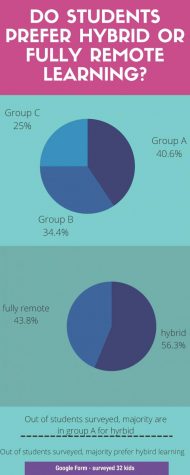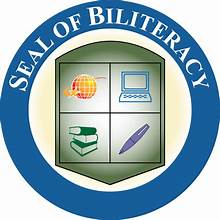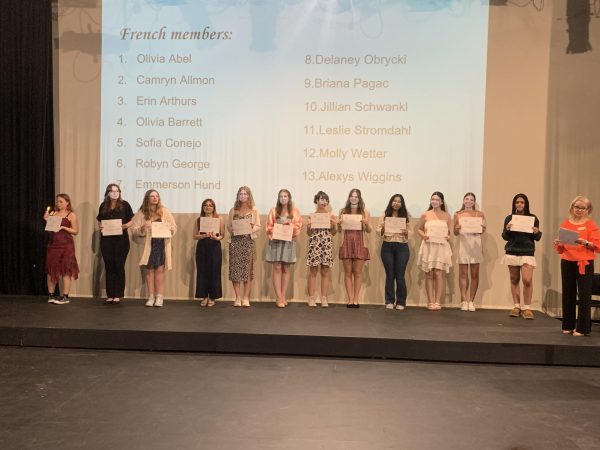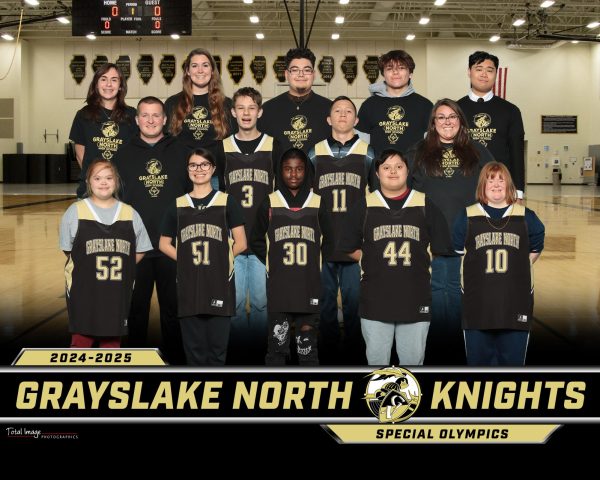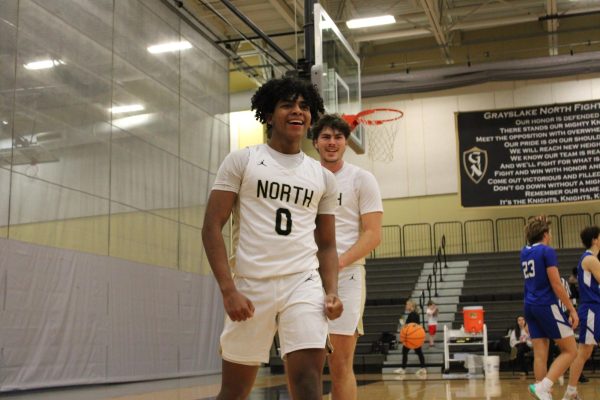Teachers adapt to hybrid learning
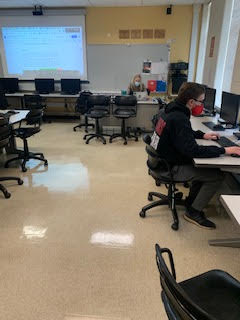
English teacher Ashley Kopecky works with the students on Zoom while also working with the students in the computer lab during her Yearbook Writing and Analysis class.
Students walk into first period on a Tuesday morning. They are greeted by their teacher as the bell rings, informing the students that class is now starting. The teacher starts the Zoom and greets each remote student as they are let into class. After attendance is taken, the teacher begins to teach the class.
As COVID numbers start to decline, schools are starting to go back to hybrid learning. For Grayslake North High School, this will be the first time testing out hybrid learning.
After teachers had to adjust the way they teach in order to be able to teach remotely, they had to do so once again in order to adapt to hybrid learning. With the adjusted schedule, teachers are not able to cover as many topics. Shorter time in class has also led to teachers cutting out projects or other assignments that would normally be part of the curriculum.
“During remote and hybrid learning, all necessary units will be covered for student success in future courses. We have, however, streamlined the way we are presenting the material,” said math teacher Mary Prange.
COVID has had a tremendous impact on students’ education. First students had to adjust to learning in front of a screen while sitting in their bed. Now students are able to go back into the building for two out of the five days of the week if they choose. This allows students to get the feeling of real school again. Although there have had to be many changes in every student and teacher’s life this year, hybrid allows for students to make their education more personal for what they need.
“I think students are strongest in what they know, and so I think that the students who are deciding to come back know that this is the way they learn best, in person in the building with a teacher right there that they connect with, and with other students there that they can connect with too. I think they are making the best choices for themselves from what they are used to, having come up from kindergarten all the way to this point in their high school career. They know themselves pretty well to be at the point where if they’re in person this is because this is how they learn best and this is what they want and need. Then those students who have adapted to Zoom and who we never thought this would be really great for, they could just log in, connect, and get their work done and maybe they are working more independently or maybe a little bit quicker. So I think it’s really this amazing opportunity for high school students to get to know themselves and how they work and how they learn best,” said English teacher Clare McConville.
After shifting to hybrid, the schedule for the day had to be changed too. Instead of an hour-and-fifteen minute classes with a thirty minute break in between the first two and the second two classes, students now have four hour-long classes and twenty minute extra help time in the afternoon for each class. If a student’s grade is below 73 percent, these extra help sessions become required. This new schedule might push those who might normally have below a 73 to keep their grades up in order to have a free afternoon, or it might not make much of a difference to students.
“For me, I don’t notice a big difference in the time change in our classes; I don’t need more instructional time. I still have plenty, and I like having that afternoon time to check in. It’s almost like I get to switch gears where I’m not focused on instructing, I’m just focused on support and health. I do like that. I feel like it’s only the kids that need help, and my focus isn’t split between trying to do instruction and helping in that way. I can just do support,” said science teacher Tracee Nurczyk.
Going hybrid has created many more difficult situations for teachers. Teachers have to learn to teach two separate groups and make sure everyone is getting the attention they need to thrive in school. As well as making sure students get the attention they need, teachers need to make sure that they are allowing both in-person and online students to participate equally.
“For a really long time, I was reaching out to students, and then through the pandemic I got used to just looking at the screen for students, and now I’m trying to figure out how to do both. I think it’s also hard to get a classroom-like feeling for things because some people are in person and some people are not,” McConville said. “I feel like I’m still in the camera more than I am out of the camera, but I’ve been working on having one question that we are talking about for the literature that we’re studying and I throw it out to everyone in Zoom. Then I walk away from the screen and talk to everyone in the classroom and come back to the Zoom so I can have them share their answers. I kind of just make sure that I’m giving the same time in alternate periods in order to give attention to both groups.”
For some teachers, there is a health concern about going into the school building. In this case, there is a teacher in the classroom to supervise and everyone is online, while the teacher teaches from their home. This can be a struggle for teachers, as students cannot really get to know their personalities over a computer screen. Teachers also can not get to know students very much over a computer screen and can not fully help as much as if they were in person with the students.
“It takes a bit longer to get to really know the students during remote/hybrid learning, but I feel I have had success in that area. I also feel body language that would normally tell me I need to check in on a student is tougher to read over Zoom. It takes extra effort to make students feel safe and that you care,” Prange said.
Being in person can bring some fear of potentially getting exposed or exposing someone else, but teachers are making sure that they are following every protocol and keeping everything cleaned and sanitized, as well as making sure people are staying socially distant from others.
“I think our district has done a great job in upgrading our ventilation system over the summer. I think our maintenance staff is amazing. They researched cleaning products and things like that, but there are just certain things that you can’t control like in passing periods,” Nurczyk said. “There is just sometimes where you can’t avoid being close to people. It’s not really any different than going to the grocery store or anything, but I also don’t love going to the grocery store. I am lucky I have my own room, so I don’t have to switch with another teacher or share. I have windows that open. I have two doors, so in terms of my specific situation, I feel like I have a lot of advantages. For sure there are concerns, though. Out of everybody in my home, I am the only one that is leaving the house and is going somewhere, so I do feel the responsibility to be extra careful when I am at work.”

